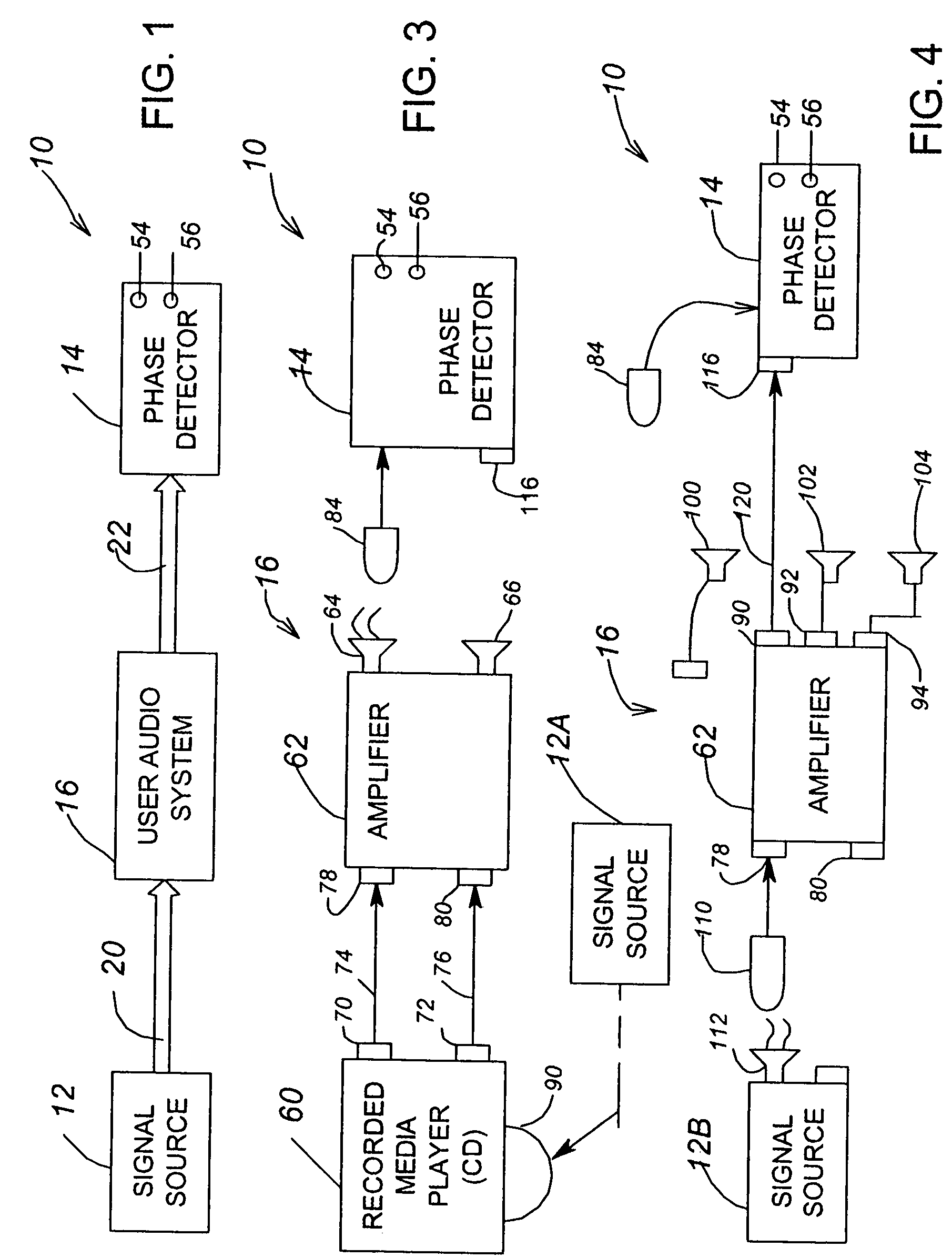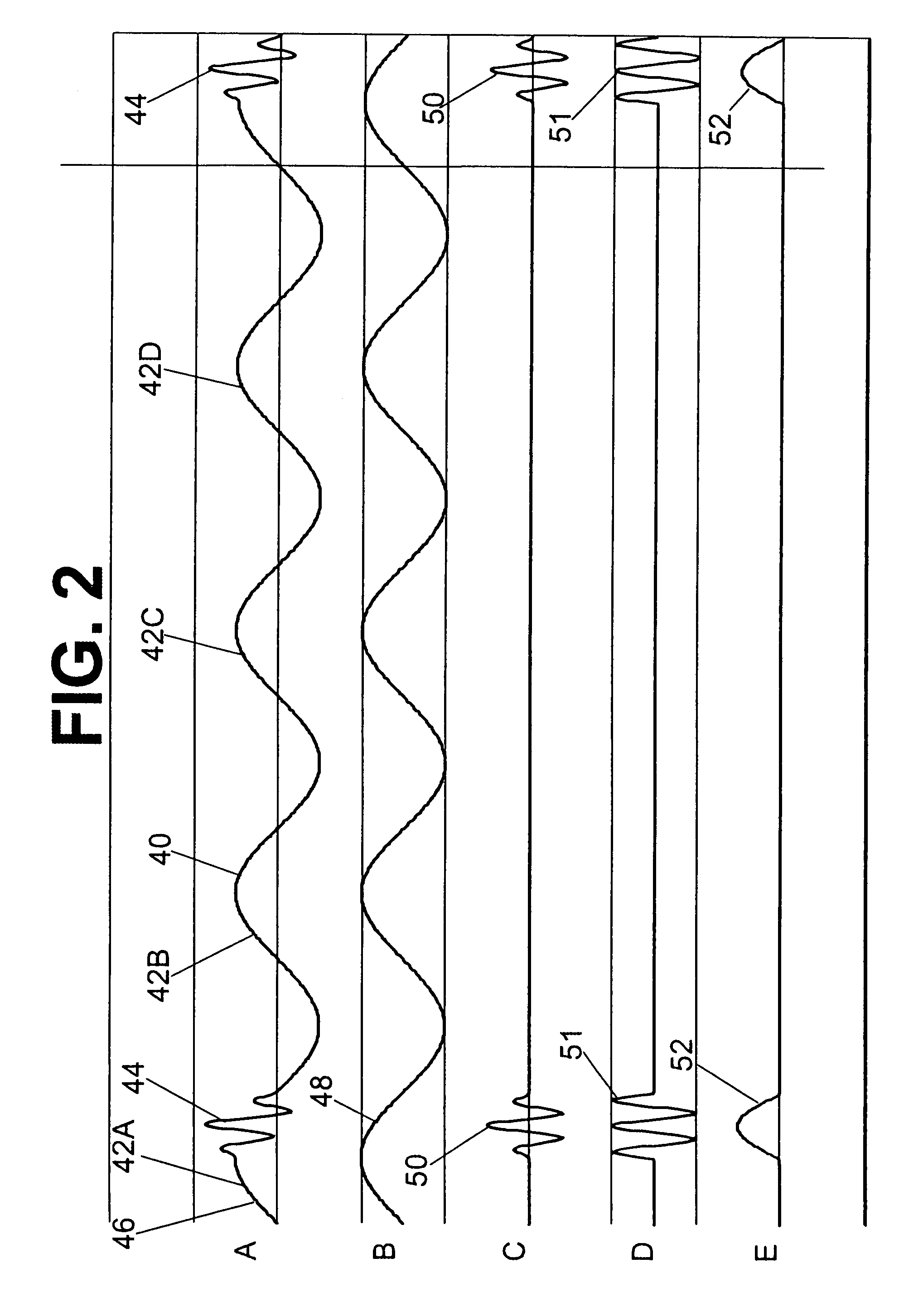Audio signal phase detection system and method
a phase detection and phase detection technology, applied in the direction of stereophonic circuit arrangements, transducer details, electrical transducers, etc., can solve the problems of serious degradation of sound quality, deterioration of sound quality, destructive interference, etc., to reduce the generation of high frequency components, and reduce the effect of signal filtering requirements within the signal sour
- Summary
- Abstract
- Description
- Claims
- Application Information
AI Technical Summary
Benefits of technology
Problems solved by technology
Method used
Image
Examples
Embodiment Construction
[0030]Referring now to FIG. 1, an audio signal phase detection system 10 in accordance with the invention includes a signal source 12 and a phase detector 14 coupled to a user audio system 16. A connection 20 represents a generalized coupling of a test signal generated by signal source 12 to the user audio system while a connection 22 represents a generalized coupling of a representation of the test signal produced by user audio system 16 in response to the original test signal to the phase detector 14. Audio system 16 may be a simple audio amplifier component of a home entertainment system, a complete audio video entertainment system, a professional system having both audio and video portions, a complex multi-input, multi-speaker audio system for a theater or amphitheater or other audio system or audio portion of a user system for which a user desires to test for signal phase reversals between an input and an output.
[0031]As shown in FIG. 2A, the signal source 12 generates a test s...
PUM
 Login to View More
Login to View More Abstract
Description
Claims
Application Information
 Login to View More
Login to View More - R&D
- Intellectual Property
- Life Sciences
- Materials
- Tech Scout
- Unparalleled Data Quality
- Higher Quality Content
- 60% Fewer Hallucinations
Browse by: Latest US Patents, China's latest patents, Technical Efficacy Thesaurus, Application Domain, Technology Topic, Popular Technical Reports.
© 2025 PatSnap. All rights reserved.Legal|Privacy policy|Modern Slavery Act Transparency Statement|Sitemap|About US| Contact US: help@patsnap.com



